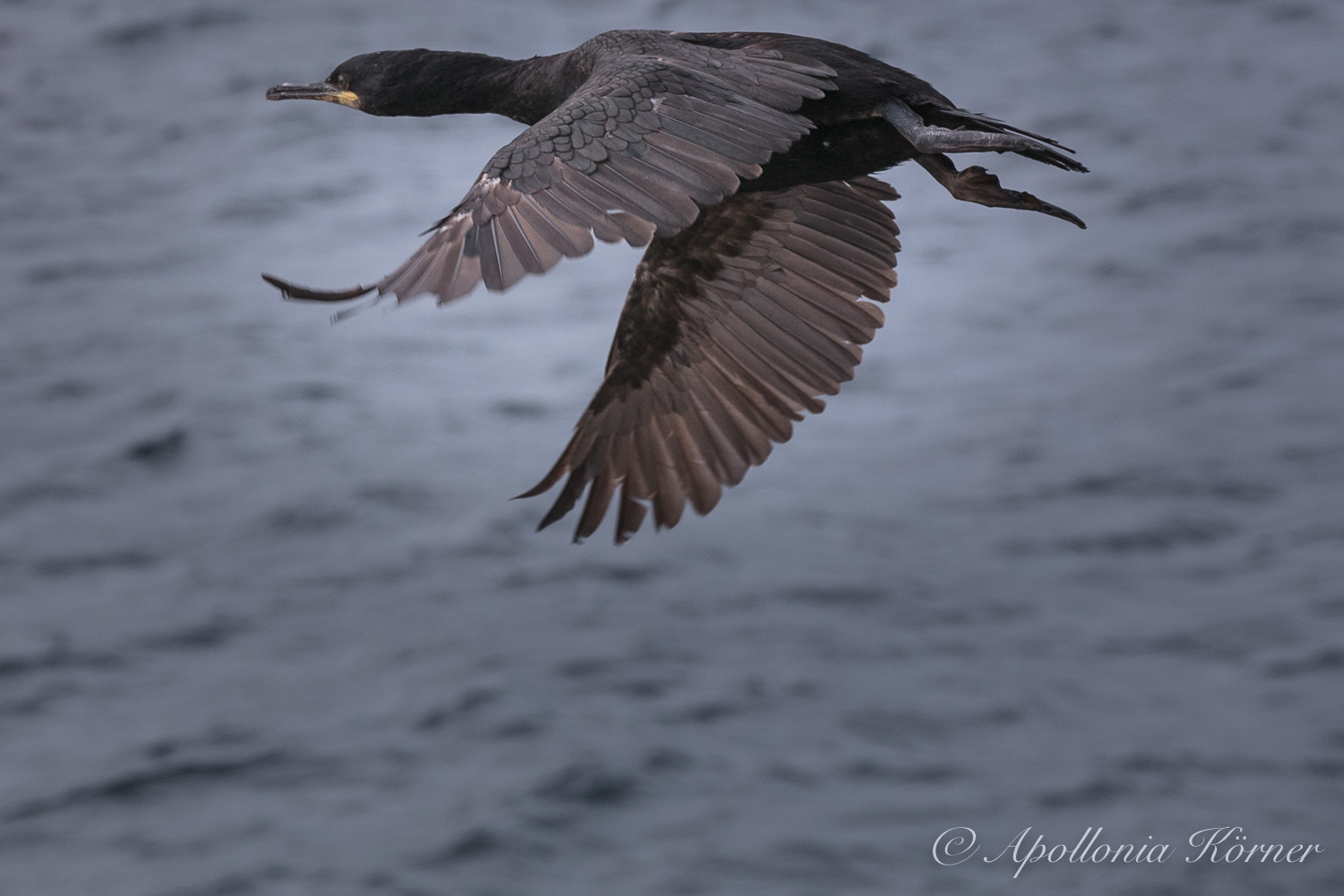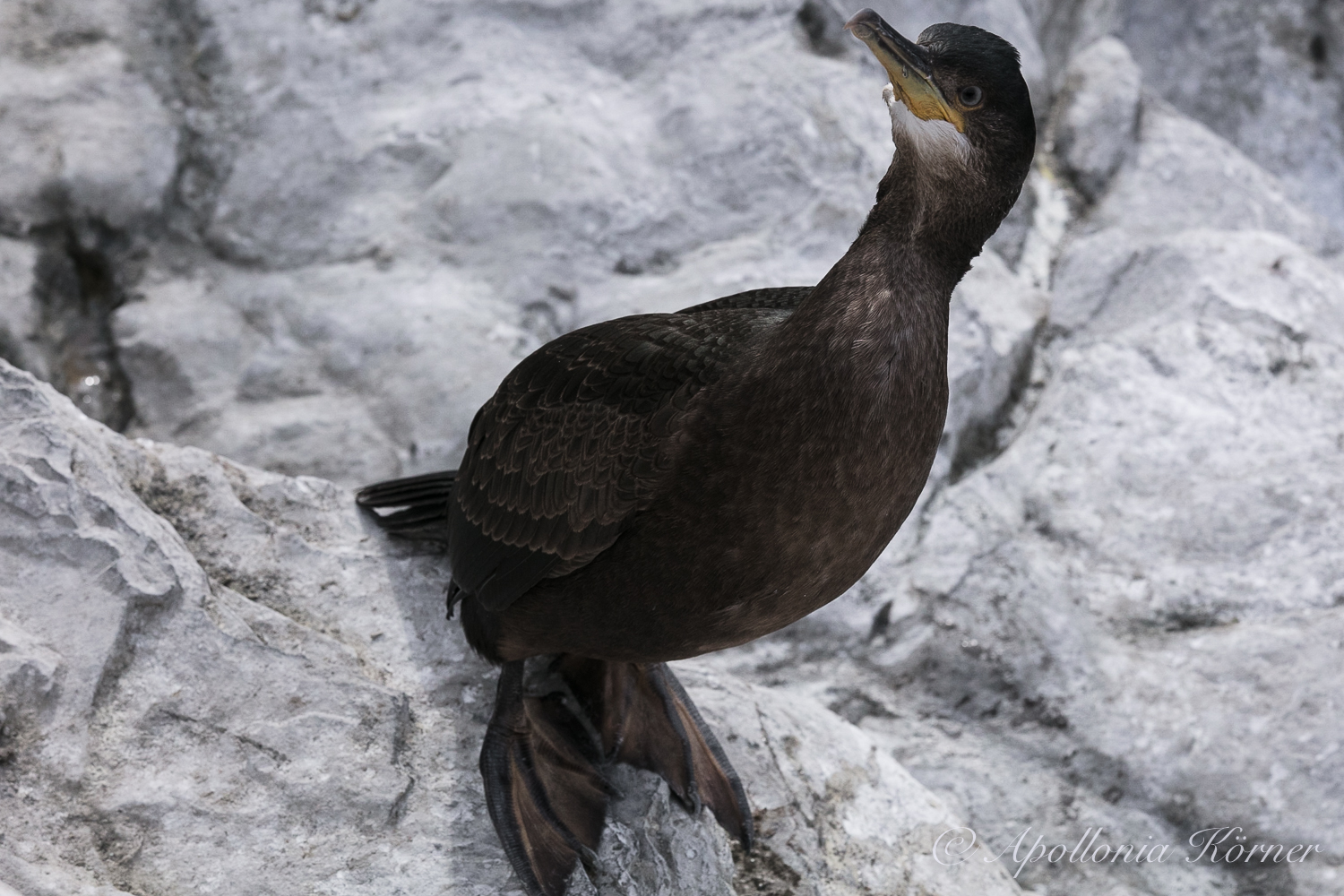Hornøya is just one kilometer away from Vardø and the island is not only the easternmost point of Norway but also well-known for its colonies of seabirds. But at the beginning of September most of them had already turned to their wintering grounds. The European shag (Phalacrocorax aristotelis) was the only species which was still there and the birds were standing in groups of different sizes on the rocks.
European shags are almost mute. Only during the mating season do they make some kind of rasping and hissing sounds. Now in autumn you can only hear a gentle grunting sound from them. The crest which is typical for the European shags and which makes them look like the younger punk sister of the cormorant can also be seen at the beginning of the mating season.
Otherwise, it is very quiet in the colony of the European shags. Either they have spread their wings to dry their feathers or they are just turning their heads constantly in order to look into different directions.
Only some individuals prepare for take-off while others are just landing.
It is very easy to distinguish the European shag from the cormorant in flight. The cormorant has a slight bend in its throat whereas the throat of the European shag is straight.

The squabs are still fed by their parents and all food that gets in at the front end has finally to get out at the rear end some time later.
It is pretty easy to see the difference in color between the squabs and the adult birds. The squabs have a rather brownish plumage while the adults birds are black.
Since I can get so close to the birds, it is also possible to distinguish other details like their webbed feet or the greenish pattern of their plumage.
